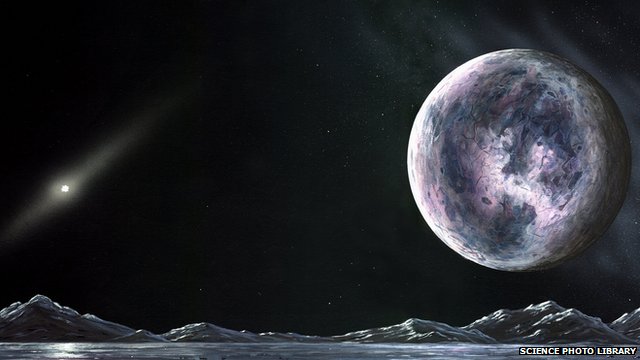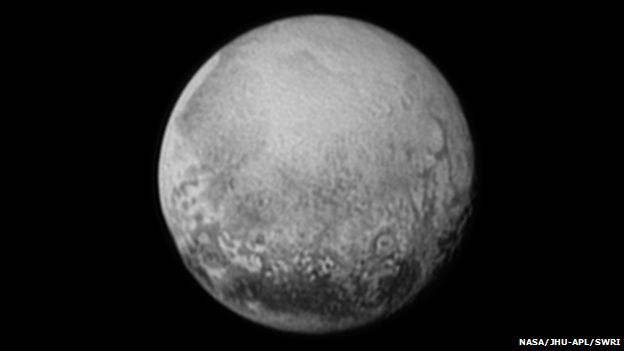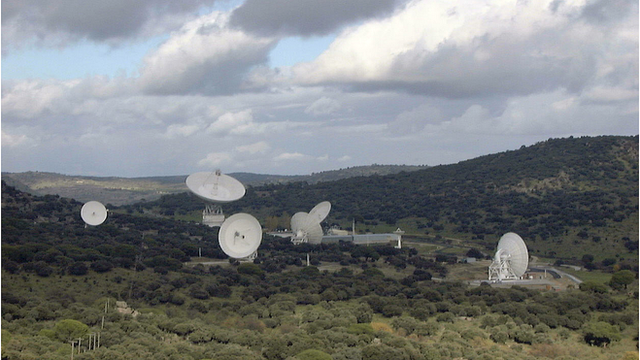New Horizons in 'great shape' for Pluto flyby

In the early hours of Monday (GMT), the American space agency probe moved to within a million miles of the dwarf planet and was closing in rapidly.
The mission has one opportunity to gather detailed pictures and other science data during the encounter.
The spacecraft is moving so quickly it cannot stop and will simply barrel past the little world on Tuesday.
Every observation New Horizons seeks to make at Pluto must be executed in just a few hours.
With nearly five billion km between Earth and the dwarf, any radio message carries hours of delay.

It means the probe cannot be controlled in real time and it will be working to an automated command sequence.
New Horizons now has that sequence written into its computer, and engineers confirmed on Sunday that they plan to send up no further commands to the spacecraft.
This is one of those key moments in the history of space exploration. A successful rendezvous will complete the initial reconnaissance of all the "classical" nine planets.

Glen Fountain, the New Horizons project manager, has told his team to stay focused but to try also to soak up some of the atmosphere.
"I've told the team they really need to be living the time," he said in a briefing to reporters.
"I mean, how often do you get a chance like this, to realise that you are participating in something much larger than yourself?"
New Horizons continues to downlink data on approach to Pluto. Selected pictures are being processed for public release.
Each new release brings surface features into sharper focus.
The latest posting is of the dwarf planet's largest moon, Charon.
Seen clearly in this new view are huge chasms and craters, as well as the moon's so-far-unexplained dark pole.
Scientists say this has been one of the major surprises of the encounter so far, as has the very contrasting appearance of Charon and Pluto.

The former is very grey; the latter is quite red.
Theory holds that their present forms were created in an ancient collision, and therefore they should share many similarities.
"(But) they are completely dichotomous," said Alan Stern, the mission's principal investigator.
"They look as though they are completely different worlds; they just as well could have been raised billions of miles apart, but they weren't."
A last batch of pre-flyby data will come down on Monday. This will include a 600-pixel-wide, full-frame image of Pluto itself.
The probe will then go radio silent. Its final contact is set for 03:17 GMT on Tuesday (04:17 BST; 23:17 EDT Monday).

During the hours of closest approach, when it gets to within 12,500km of the surface, New Horizons is simply too busy to talk to Earth.
The automated observation sequence will see it make hundreds of movements as it slews every which way to point its cameras, not just at Pluto and Charon, but also at the lesser moons in the system: Styx, Nix, Kerberos and Hydra.
The mission team will be waiting anxiously at its operations centre here at Johns Hopkins University for a signal confirming that the flyby was completed without incident.
This message should start to come through at 00:53 GMT Wednesday (01:53 BST; 20:53 EDT Tuesday).
All it will contain at that time will be engineering data on the status of the probe. But New Horizons' mission manager, Alice Bowman, said that just this ordinary telemetry would indicate whether all the observations were conducted as they should have been.
"If everything looks normal, there's no reason to think we didn't get the goods," she told BBC News.
Some choice images acquired at the moment of closest approach will be released on Wednesday.

The BBC will be screening a special Sky At Night programme called Pluto Revealed on Monday 20 July, which will recap all the big moments from the New Horizons flyby.













Add new comment